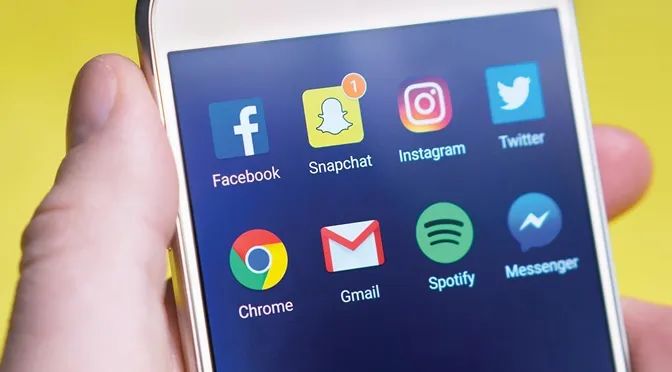
Setting Teens Up for Success in a Technology Driven World
October 2018
by Andrea Nemitz
Today, more than ever, teens are immersed in a technological culture that has a powerful grip on their time, their mental capacity, and their physical well-being. Mounting research suggests that the devices we thought would connect us may actually be causing harm. There is something so calming and pacifying about this magical device we hold in our hands. But how is it changing our lives at home? In the classroom? Our children’s interactions with peers? The hope of this article is to bring awareness to an issue that no generation of parents before us has had to navigate, and perhaps even inspire change.
We caught up with Earl Campbell, a task force officer from the Billings Police Department who specializes in online child exploitation crimes including child pornography and solicitation. Earl also gives public internet safety presentations for all age groups, including high school. With Earl’s expertise, we wanted to know, has the availability of smartphones to children and teens introduced new challenges in keeping kids safe online? What are his greatest concerns?
As you can imagine, his answer bolstered our fears. “Yes, the availability of smartphones and tablets for children has been a major game changer for us. As devices become cheaper and more powerful, they are opening more and more children to online exploitation. The biggest concerns are that children are being given devices with no parental instruction or boundaries. We are consistently seeing parents providing devices to children, and they are expected to entertain themselves on their new device with little or no parental oversight/guidance.”
One teen inspired us. Her parents have set boundaries for her such as not allowing a phone in her room at night, no phone at the dinner table, and probably the most important, put it down when people are talking to you! As she heads off to college this year, she wants to challenge herself to use her phone as a tool to communicate with the people she loves, and to live in the real world without comparing herself to images she sees online and unrealistic expectations that social media presents every day. The pressure to be online and to update her “status” constantly can be arduous, but she recognizes that face-to-face interaction is more valuable than communicating via a screen.
The rules created by the parents mentioned above are guidelines Earl suggests as well. Set up a charging station in a common area of the house so devices can be charged at night instead of in children's bedrooms. Do random device checks on ALL devices used to access the internet. Know what apps are being used. If parents don’t recognize an app icon on their child's phone, they should utilize the search engine to become educated about what the app is, and how it works. He also suggests that parents have the login information for all of their children’s accounts. Being their “friend” on social networks is not enough as parents aren’t able to see what private conversations or groups they are in. Teens can take control of their own safety by being vigilant about people they meet online. He emphasizes that the "stranger danger" rule is even more critical online since visual danger clues are eliminated in a virtual relationship. People can become anyone they want online!
The unrealistic expectations and social pressures to have a device are transforming our society and our classrooms. Children face the challenge of managing time, homework, peer and parental relationships, and disruptions to quality sleep, which can affect their physical and mental health. They are also more likely to be exposed to pornography which steers them away from the innocence that childhood should hold dear. As parents and educators, administrators, and policymakers, what can we do in our spheres of influence to spark change? WE have the POWER to restore how we spend time with technology for the betterment of us all!
How can we take action?
A group of parents in Texas linked arms and said “No!” to cell phones for their children until AT LEAST 8th grade. (You can find more information at www.waituntil8th.org).
A father of four from Utah named Collin Kartchner started a movement called #SAVETHEKIDS to fight negative social media influence on teens. He felt the need to fight after a family friend’s daughter committed suicide.
Delaney Ruston, MD, the creator of the film Screenagers recently devised an “Away for the Day” cell phone policy that gives parents resources to become change-makers in their local schools.
As France moves to ban cell phones in schools this current school year, I wonder how we can support teachers in our own schools. We all want the best learning environment for our children, which is a sentiment that a local Billings High School teacher shares as well. Daily, she sees distracted and withdrawn students sitting or walking down the halls with their heads down, texting and Snapchatting, running into other people and things, and not physically interacting with their peers. She doesn’t believe the benefits of students with cell phones outweigh the cost and distractions of phones in the classroom. When asked how parents could better support teachers, she responded that we need to take a “walk in her shoes” kind of attitude, understanding that classroom time is limited, and creating a desirable learning environment is essential. If, as parents, we value quality family time and important life lesson discussions at home, then we must also get back to the basics in the classroom so kids can learn and grow.
Originally printed in the pages of Simply Family Magazine’s October 2018 issue.
Never miss an issue, check out SFM’s digital editions, here!

